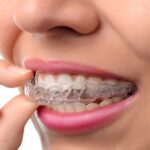Teeth aligners have revolutionized the field of orthodontics by offering a discreet and convenient alternative to traditional braces. While their popularity continues to soar, it’s important to acknowledge that aligners are not without their drawbacks. Understanding these downsides is essential for anyone considering aligners as a treatment option.
The Convenience Factor—But at a Cost
One of the most significant benefits of aligners is their convenience. Unlike traditional braces, aligners are removable, allowing users to eat, drink, and maintain oral hygiene without the hassle of metal brackets and wires. However, this convenience can also become a drawback. Aligners require discipline and consistent wear, typically 20–22 hours a day. Failure to follow these guidelines can result in delayed treatment or less effective results.
Moreover, aligners must be removed before consuming anything other than water. This can be inconvenient, particularly for individuals with busy schedules or social commitments. Forgetting to reinsert the aligners after eating can prolong the treatment period, emphasizing the need for commitment.
For those considering Teeth Aligners in Islamabad, it’s vital to evaluate whether your lifestyle aligns with the discipline required for successful treatment.
Discomfort and Speech Issues
Though aligners are marketed as more comfortable than traditional braces, they still come with a degree of discomfort. When new trays are introduced, users often experience pressure on their teeth, which can be uncomfortable for a few days. This sensation is a normal part of the alignment process, but it can be unsettling for first-time users.
In addition, aligners may temporarily affect speech. Some users report a slight lisp during the initial days of wearing a new tray. While this issue typically resolves as you adjust to the aligners, it can be an inconvenience, especially for individuals whose work or social life requires frequent verbal communication.
Cost Considerations
Aligners are often more expensive than traditional braces. The cost can vary depending on the complexity of the case, the duration of treatment, and the type of aligners used. In many cases, aligners are not fully covered by insurance, making them a significant financial investment for patients.
Additionally, losing or damaging aligner trays can result in additional costs. Since each tray is custom-made, replacements can be expensive and may disrupt your treatment schedule.
Not Suitable for Complex Cases
Aligners are highly effective for mild to moderate orthodontic issues, such as overcrowding, gaps, or slight misalignments. However, they may not be suitable for more complex dental problems. Severe cases, such as significant bite issues or jaw misalignments, often require traditional braces or other orthodontic treatments.
This limitation can be disappointing for individuals seeking the convenience of aligners but needing comprehensive correction. Consulting an experienced orthodontist is crucial to determine whether aligners are a viable solution for your specific needs.
Maintenance Challenges
Aligners demand strict maintenance to remain effective and hygienic. They must be cleaned regularly to avoid staining and odor. Failure to properly care for aligners can lead to bacterial buildup, compromising oral health.
Moreover, aligners can become discolored over time, especially if users fail to remove them while consuming beverages like coffee, tea, or wine. Maintaining the transparent appearance of aligners requires diligence, adding another layer of responsibility for users.
Risk of Loss or Damage
Since aligners are removable, there is always a risk of losing or damaging them. Whether misplaced during meals or accidentally thrown away, losing an aligner tray can disrupt treatment and lead to additional costs. For individuals prone to forgetfulness or carelessness, this can be a significant downside.
Psychological and Emotional Drawbacks
Although aligners are designed to be discreet, they are not entirely invisible. Some users may still feel self-conscious wearing them, particularly in professional or social settings. Additionally, the strict wear time and frequent tray changes can feel burdensome, potentially leading to frustration or discouragement during the treatment process.
Conclusion
Teeth aligners offer a modern, flexible alternative to traditional braces, but they are not without their drawbacks. From maintenance requirements to discomfort and higher costs, aligners come with challenges that users must carefully consider. While they are ideal for many patients, they are not suitable for everyone, especially those with complex dental issues or less disciplined lifestyles.
If you’re considering teeth aligners, it’s essential to consult a trusted provider. Royal Cosmetic Surgery Clinic in Islamabad offers expert guidance to help you make an informed decision tailored to your unique needs. By weighing the pros and cons, you can embark on a journey toward a straighter, more confident smile.

